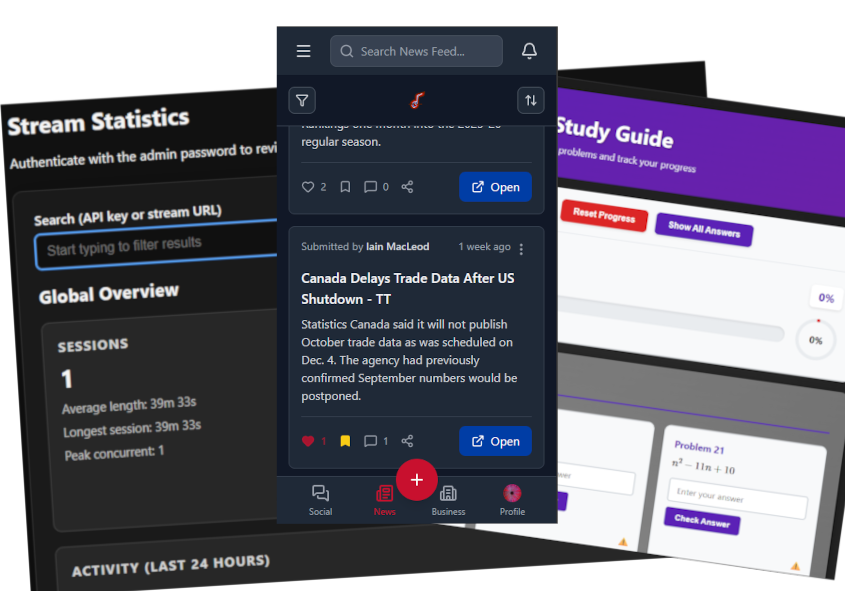Unlock Your Team's Potential: How Tools Can Transforms Talent Management
Unlock your team’s potential with Culture Index! Learn how understanding work behaviors—not just skills—can transform hiring and management. Discover key insights to build stronger, more productive teams. Ready to elevate your talent strategy? Let’s partner for your success!

In the competitive landscape of modern business, understanding your people is paramount. It’s not just about what skills they bring, but how they work, what motivates them, and how they best contribute. There are many tools out there that can assist with determining an individuals "profile": DiSC, Predictive Index, Myers Briggs, and Culture Index, to name a few. In this article I am going to focus on how I have used Culture Index within former organizations to help transform how I hire and manage a team.
The Culture Index is designed to assist with determining the work-related behavior of an individual and how best to manage them. This makes it an invaluable asset, not only for optimizing how you engage and utilize your current team, but also for making informed decisions during the hiring process by understanding a candidate's inherent work-related tendencies.
⚠️ Crucial Clarity: What Culture Index Can (and Cannot) Do
Before we dive deeper, it's vital to understand the precise scope of the Culture Index. It is a powerful tool for understanding behavioral patterns, but it is emphatically NOT a weapon for judgment or termination. The objective of using Culture Index is to attain realistic outcomes that are a win/win. Furthermore, Culture Index consultants advise against pushing or ramping up change immediately following a workshop, as imposing change right away can be disruptive and create ill will toward the program, organization, or department.
Culture Index WILL assist with determining:
- Work-related behavior of an individual.
- How to best manage a particular individual.
Culture Index WILL NOT assist with determining:
- An individual’s integrity.
- An individual’s intelligence.
- An individual’s ability to learn.
- An individual’s ambition.
By recognizing these limitations, businesses can leverage CI effectively, focusing on its strengths as a behavioral assessment tool to build stronger, more cohesive, and more productive teams.
Decoding Individual Patterns: The Core Constructs
The Culture Index survey involves an individual selecting from almost 200 adjectives to describe themselves. This generates a "Survey Traits" pattern, revealing "Who" the individual perceives themselves to be. They also indicate how they perceive they need to behave for their job, creating a "Job Behaviors" pattern, indicating "How" they work.
The core of an individual's pattern and traits are defined by seven constructs:
- A = Autonomy: Associated with leadership.
- B = Social ability: Associated with empathy.
- C = Patience: Associated with sympathy.
- D = Conformity: Associated with processing.
- EU = Energy Units/Mental Stamina: Associated with energy, morale, and stress.
- L = Logic (versus emotion): Associated with emotional/logical reasoning.
- I = Ingenuity: Also referred to as creativity.
It's important to note that traits are inherent and become ingrained between the ages of 8-12. We can modify our behaviors, but not our core personality. However, modifying behavior requires "Energy Units" (EU) and takes work.
Understanding the Primary Constructs (A, B, C, D) for Better Engagement
The primary constructs (A, B, C, D) are evaluated relative to a mean. Deviation from this mean is categorized as "Somewhat," "Very," and "Extreme," indicating how prevalent these traits are compared to the majority of the population. The most "extreme" primary construct often serves as a general guideline to "Who" the individual is. This understanding is crucial for effective management and team utilization.
Here's a breakdown of the insights each primary construct provides when it is lower (left of the red line) or higher (right of the red line), directly impacting how you engage and manage your team:
1. Autonomy (A)
- Lower-A (Low Autonomy):
- Traits: Team player, task oriented, focus on the present (micro), humble, agreeable, non-confrontational, compliant.
- Motivators: Strong team (low conflict, high collaboration), checklists of assignments, removal of risk/uncertainty, reassurance, celebration of wins.
- Pluses: Servant-hearted, task execution-oriented, collaborative, good "Customer Service" focus, takes and follows direction.
- Minuses: Indecisive, push-over, self-deprecating, unwilling to make tough decisions, easily intimidated.
- Higher-A (High Autonomy):
- Traits: Control-oriented, competitive, ambitious, driven, decisive, independent, future-oriented (macro), risk-taker.
- Motivators: Winning, Big Hairy Audacious Goals (BHAG), challenges, scoreboards, variable compensation, knowing 3-5 year goals.
- Pluses: Leadership, vision, strategic, growth/scale, innovation, adaptable, challenges status-quo.
- Minuses: Self-focused, exhausting, abrasive, blunt, controlling.
2. Social Ability (B)
- Lower-B (Low Social Ability):
- Traits: Data/fact-oriented, introspective, socially awkward, analytical, skeptical, reserved, private, guarded, introverted.
- Motivators: Private recognition, alone time, technical/analytical work, research opportunities.
- Pluses: Come to work-to-work, direct, data analytics, technical problem solving, operationally efficient, innovative.
- Minuses: Lack of empathy, comes across cold/aloof, demotivates higher B's, cynical, pessimistic.
- Higher-B (High Social Ability):
- Traits: Seeks social acceptance, life of the party, outgoing, talkative, consensus builders, persuasive, intuitive, empathetic, extroverted, optimistic.
- Motivators: Public recognition (titles, status, experiences), personal interaction, relationship building roles.
- Pluses: Relationship equity, morale builders, positive mental attitude, cheerleaders, power of persuasion.
- Minuses: Insincere, need to be liked, "hero-complex" (struggle holding others accountable), too talkative, gullible.
3. Patience (C)
- Lower-C (Low Patience):
- Traits: Multi-task, thrives on change, acts immediately, impatient, quick, driving, responds positively to pressure and change.
- Motivators: Having lots to do, change, tight deadlines.
- Pluses: Handles variety, disruptive (if innovation is required).
- Minuses: Disruptive (if stability is required), lack of focus, procrastinates, expects the same of others.
- Higher-C (High Patience):
- Traits: Single task focus, prefers stability, methodical, sequential, steady, unhurried.
- Motivators: Clearly defined checklist, deadlines, time to complete tasks.
- Pluses: Good listener, focused, process oriented, slow to burn out, non-impulsive.
- Minuses: Doesn't multi-task, change resistant, stuck in routine/stagnant.
4. Conformity (D)
- Lower-D (Low Conformity):
- Traits: Risk tolerant, comfortable with failure, conceptual, generalist, rule breaker, outside the box thinking, fearless.
- Motivators: Freedom to make exceptions, flexibility, no micro-management, loose constraints with high accountability.
- Pluses: Resilient, opportunistic, innovation, good delegator, ideation/brainstorming.
- Minuses: Poor follow-through, poor work-related recall, defiance/argumentative, sloppy, disorganized.
- Higher-D (High Conformity):
- Traits: Follows rules/policies/procedures, risk averse, accurate, precision, perfectionist, high standards, detailed, knowledge-driven.
- Motivators: Quest for knowledge, removal of risk, clearly prioritized checklist, continuing education, SOPs/Manuals.
- Pluses: Accurate work, trustworthy, quality control, task execution, resident expert, procedural, gets tasks done.
- Minuses: Holds grudges, can't delegate, micro-managers, thin-skinned, hypercritical, rigid.
Beyond the Primary Four: Energy Units, Logic, and Ingenuity
- Energy Units (EU): This construct reflects an individual's energy level or mental stamina and determines the placement of the pattern on the chart. A lower EU suggests an individual may require more breaks for optimum productivity, while a higher EU indicates more focus for extended periods. A significant divergence (ideally, within 10 of each other) between Survey Traits EU and Job Behaviors EU can indicate lower morale or stress, suggesting something needs to be addressed to help the individual perform to their fullest potential.
- Logic (L): The Logic construct indicates an individual's approach to decision-making regarding emotions.
- Lower-L (0-2): Individuals easily show emotions; emotions and sentiment govern decisions. They can be emotionally charged, passionate, charismatic, and temperamental.
- Normative-L (3-7): Better at concealing emotions, applying both logic and emotions to decision-making. As the score moves from 3 to 7, logic takes precedence over emotions.
- Higher-L (8-10): Very hard to read, tend to apply purely logic to decisions. They can be dispassionate, non-emotive, black-and-white, and low drama.
- Ingenuity (I): Often considered creativity, this construct describes an individual's thinking style.
- 0-6: Individuals tend to demonstrate more literal interpretations, considered unimaginative or naive. Their thought process is linear, literal, concrete, and pragmatic.
- 7-10: Individuals show multi-dimensional thinking, considered abstract and unconventional. At level 10, ideas can be so unique they might be interpreted as quirky. Their thought process is abstract, unconventional, eccentric, and inventive.
Typified Patterns and Construct Relationships for Team Harmony
The Culture Index identifies nineteen typified patterns, which are grouped into four distinct categories: Visionary, Research, Social, and Organizational. Each group has generalized traits, motivations, and communication styles, providing a quick reference guide for effective collaboration and team building.
Furthermore, relationships between primary constructs, known as "Factor Emphasis," offer deeper insights into individual thinking styles and team dynamics. For example, a high Autonomy (A) to lower Conformity (D) suggests big picture thinking and a future focus (macro, offensive, starters). Conversely, a low Autonomy (A) to higher Conformity (D) indicates here-and-now thinking and a present focus (micro, defensive, detailed).

Partnering for Success: A Tool for Growth, Not Judgment
By utilizing the Culture Index, businesses can gain invaluable insights into their workforce, optimizing team dynamics, improving communication, tailoring motivational strategies to individual needs, and making more informed hiring decisions for specific roles. This understanding can lead to more effective management, better talent utilization, and a healthier organizational culture rooted in understanding and support, not arbitrary judgment.
I hope you found this article informative and potentially gave you a fresh perspective on your hiring process.
If you're ready to take your business to the next level and want expert support, I’m here to help. Whether you need guidance, strategy, or hands-on assistance, don’t hesitate to reach out—I’d love to partner with you on your journey to success.



